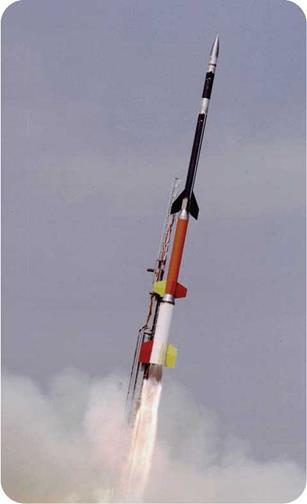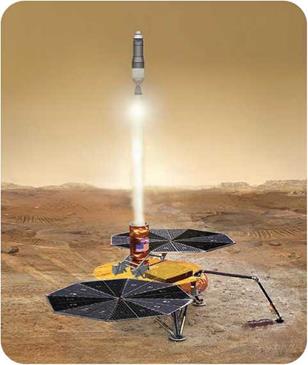Staying on Course
The calculations involved in space navigation are complex. The launch base (Earth), the space probe, and the probe’s target (a moon of one of the giant planets, perhaps) are all moving through space. Ground controllers must calculate
|
|
launch speed and course precisely. If necessary, they make midcourse corrections by using computers to fire small rocket motors onboard the spacecraft. In this way, scientists can send a probe on voyages that will last for years.
When deciding on a launch date for a planetary probe, scientists choose a favorable “window,” usually when the target planet is at its closest. Moving between planets in space seldom involves traveling in a straight line. Keeping a space probe on the right course requires smart computing and
|
О A conceptual illustration by NASA shows how samples could be launched from the surface of Mars in a capsule that would bring them back to Earth as part of future missions to Mars. |
accurate gyroscopes on the spacecraft. The gyroscopes are used for inertial guidance to keep the space probe on course without reference to the Sun or stars. Instruments measure the slightest change in the spacecraft’s acceleration so that computers can calculate any adjustment to the course. When planning a multiplanet mission, scientists may be able to send the probe on a “slingshot” trajectory. This takes the probe around one planet and then uses the planet’s gravitational pull to accelerate it off to the next target. Pioneer 11 did this in 1975, swinging around Jupiter onto a path that took it to Saturn.












